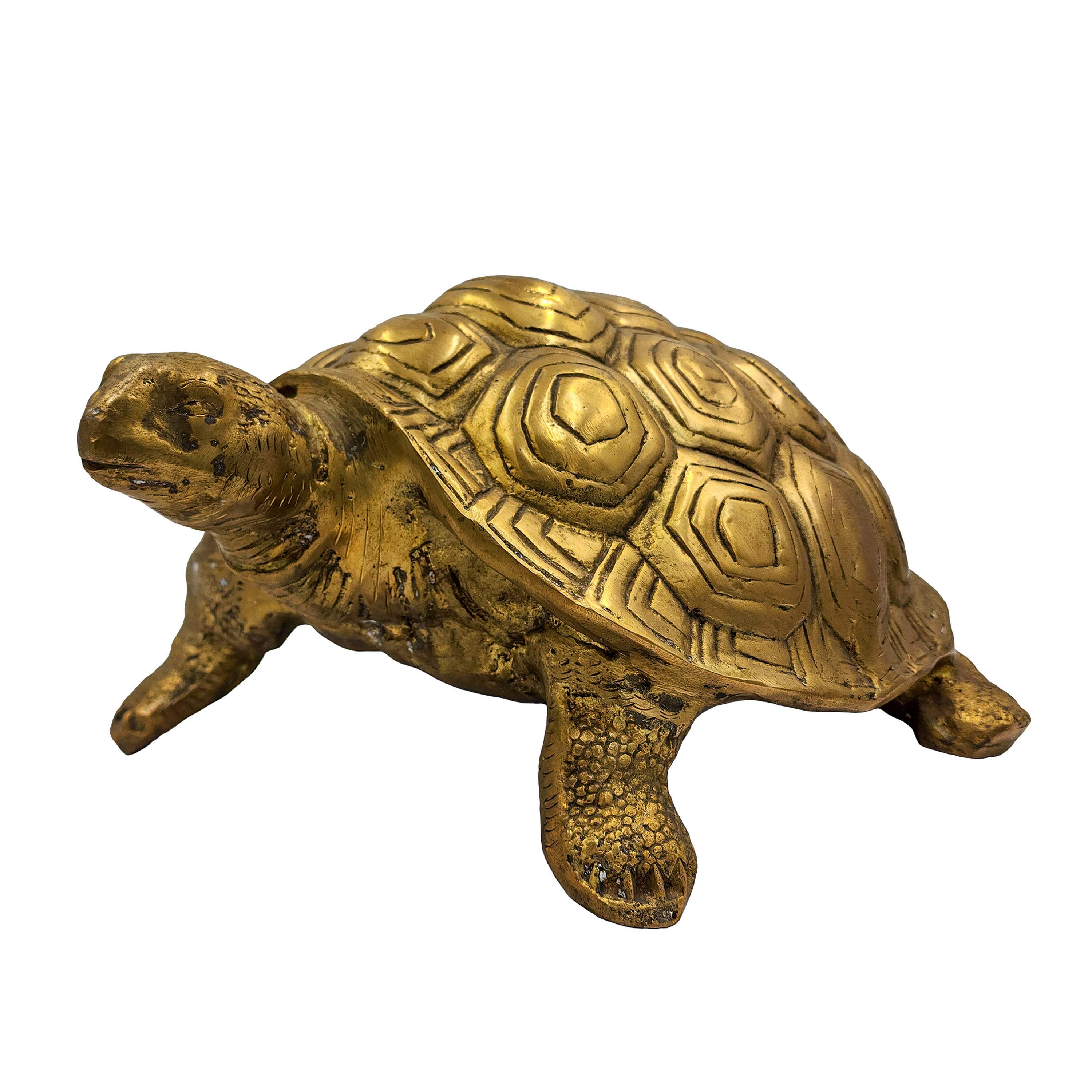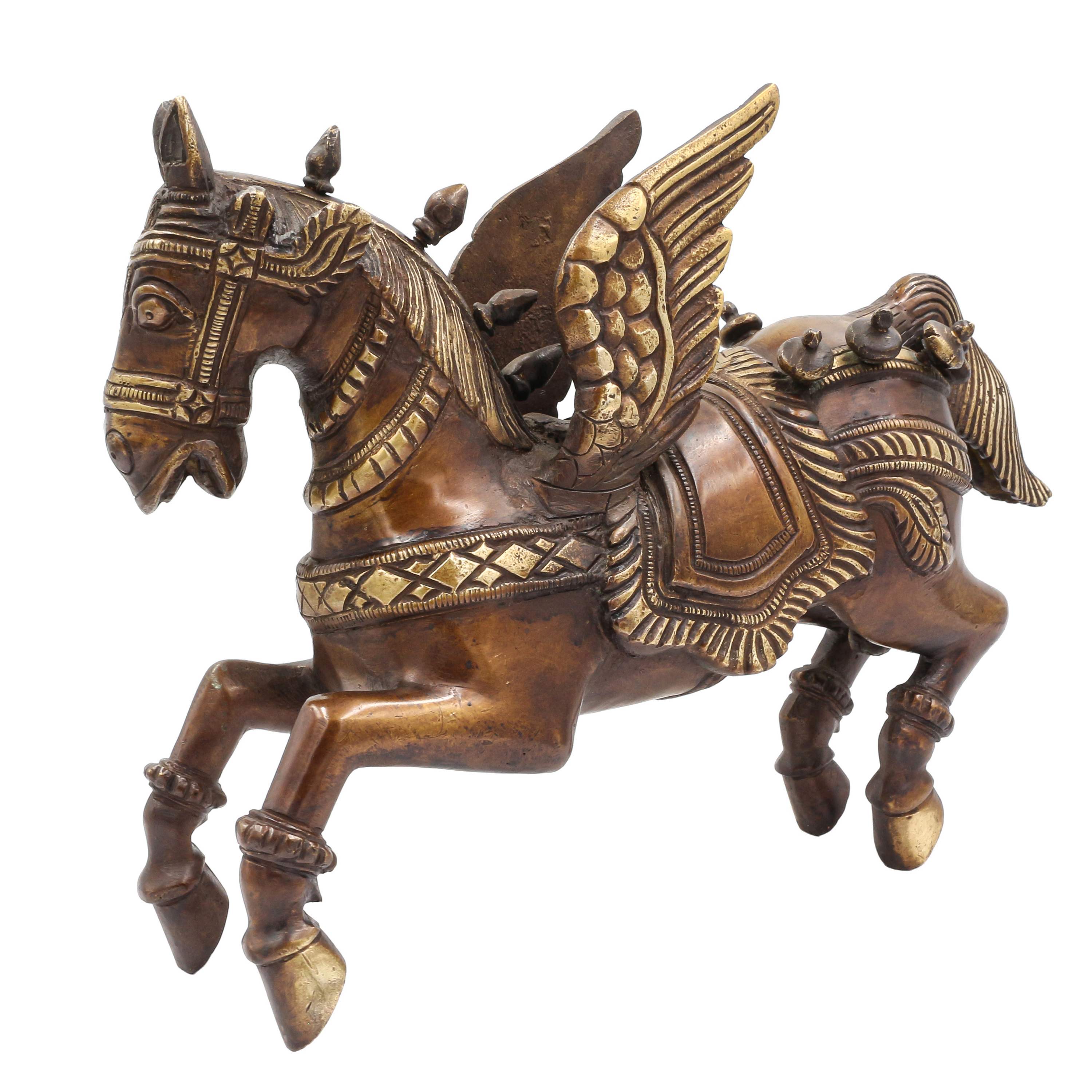Code
HCS26436
Weight
2.96 Kg / 6.53 lbs
Size
Height
18cm (7") Width
23cm (9") Depth
11cm (4") Material
Bronze
Availability
Available

Safe Payment
We accept Paypal, Money Transfer, Bank Transfer
Confidence
Protection covers your purchase and personal data.
Worldwide Delivery
We ship Worldwide, except Russia.Shipping cost US$25.2 for upto 0.5 kgs

Hotline
Talk to help line for your question on 9841267335Process: Sand Casting
This Statue Of Cow, Kamadhenu [fine Quality] has been created using the sand casting system, also known as sand molding casting. This widely employed manufacturing process utilizes a sand mold to produce metal products and components in various sizes and shapes. Sand casting holds significant popularity in the industry, accounting for approximately 60% of all metal castings. The sand casting process involves six primary steps. First, a pattern or replica of the desired sculpture, in this case, Statue Of Cow, Kamadhenu [fine Quality], is created using a material like wood or metal. The pattern is then placed in a flask, which is a box-like structure divided into two halves. The next step involves packing the flask tightly with specially formulated molding sand, creating a mold cavity that matches the shape of the pattern. The pattern is subsequently removed, leaving behind a negative impression of the sculpture within the sand mold. Read More . . .
This Statue Of Cow, Kamadhenu [fine Quality] has been created using the sand casting system, also known as sand molding casting. This widely employed manufacturing process utilizes a sand mold to produce metal products and components in various sizes and shapes. Sand casting holds significant popularity in the industry, accounting for approximately 60% of all metal castings. The sand casting process involves six primary steps. First, a pattern or replica of the desired sculpture, in this case, Statue Of Cow, Kamadhenu [fine Quality], is created using a material like wood or metal. The pattern is then placed in a flask, which is a box-like structure divided into two halves. The next step involves packing the flask tightly with specially formulated molding sand, creating a mold cavity that matches the shape of the pattern. The pattern is subsequently removed, leaving behind a negative impression of the sculpture within the sand mold. Read More . . .
Brief Introduction :
Kamadhenu also known as Surabhi is a divine bovine-goddess described in Hinduism as Gou Mata, the mother of all cows. She is a miraculous "cow of plenty" who provides her owner whatever he desires and is often portrayed as the mother of other cattle. In iconography, she is generally depicted as a white cow with a female head and breasts, the wings of a bird, and the tail of a peafowl or as a white cow containing various deities within her body. All cows are venerated in Hinduism as the earthly embodiment of the Kamadhenu. As such, Kamadhenu is not worshipped independently as a goddess, and temples are not dedicated to her honor alone; rather, she is honored by the veneration of cows in general throughout the observant Hindu population.
Hindu scriptures provide diverse accounts of the birth of Kamadhenu. While some narrate that she emerged from the churning of the cosmic ocean, others describe her as the daughter of the creator god Daksha, and as the wife of the sage Kashyapa. Still other scriptures narrate that Kamadhenu was in the possession of either Jamadagni or Vashista, and that kings who tried to steal her from the sage ultimately faced dire consequences for their actions. Kamadhenu plays the important role of providing milk and milk products to be used in her sage-master's oblations; she is also capable of producing fierce warriors to protect him. In addition to dwelling in the sage's hermitage, she is also described as dwelling in Goloka - the realm of the cows - and Patala, the netherworld.


![Statue Of Cow, Kamadhenu [fine Quality]](https://handicraftseller.com/uploads/pics/product/thumb/2022/10/26436_0.jpg)
![Statue Of Cow, Kamadhenu [fine Quality]](https://handicraftseller.com/uploads/pics/product/thumb/2022/10/26436_1.jpg)
![Statue Of Cow, Kamadhenu [fine Quality]](https://handicraftseller.com/uploads/pics/product/thumb/2022/10/26436_2.jpg)
![Statue Of Cow, Kamadhenu [fine Quality]](https://handicraftseller.com/uploads/pics/product/thumb/2022/10/26436_3.jpg)
![Statue Of Cow, Kamadhenu [fine Quality]](https://handicraftseller.com/uploads/pics/product/thumb/2022/10/26436_4.jpg)
![Statue Of Cow, Kamadhenu [fine Quality]](https://handicraftseller.com/uploads/pics/product/thumb/2022/10/26436.jpg)

 of Cat,
of Cat,  of Cat,
of Cat,  of Giraffe,
of Giraffe,  of Giraffe,
of Giraffe,  of Deer, Sand Casting, Glossy Finishing" title="Statue
of Deer, Sand Casting, Glossy Finishing" title="Statue  of Deer, Sand Casting, Glossy Finishing" title="Statue
of Deer, Sand Casting, Glossy Finishing" title="Statue  of One Horn Rhinoceros,
of One Horn Rhinoceros,  of One Horn Rhinoceros,
of One Horn Rhinoceros,  of Tortoise,
of Tortoise,  of Tortoise,
of Tortoise,  of Temple Lion Set, Sand Casting" title="Buddhist Statue
of Temple Lion Set, Sand Casting" title="Buddhist Statue  of Temple Lion Set, Sand Casting" title="Buddhist Statue
of Temple Lion Set, Sand Casting" title="Buddhist Statue  of Tiger" title="Buddhist Statue
of Tiger" title="Buddhist Statue  of Tiger" title="Buddhist Statue
of Tiger" title="Buddhist Statue  of Jackal,
of Jackal,  of Jackal,
of Jackal,  of Elephant,
of Elephant,  of Elephant,
of Elephant,  of
of  of
of